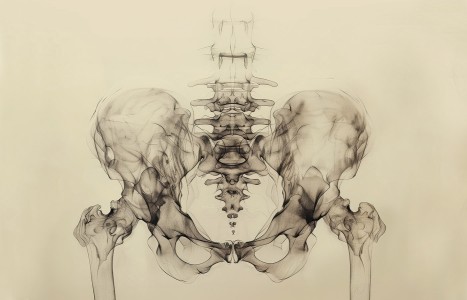People today want convenience, whether it be from their bank, credit card, favorite retail store, or restaurant. They demand it from the companies who hold their loyalty, including their health care providers (you). They don’t want to call and possibly be put on hold, and they want to use an app or schedule an appointment on your website. Here are three reasons your practice can gain by switching to online appointment scheduling.
Acupuncture’s Role in Resolving GLP-1 Drug-Induced Blindness
- Behind the glossy marketing and pharmaceutical assurances of GLP-1 medications lurks an underrecognized and potentially severe optic complication: non-arteritic anterior ischemic optic neuropathy (NAION).
- Acupuncture offers a promising therapeutic avenue for patients suffering from NAION or at risk of optic nerve ischemia.
- When patients seek help for vision changes, we should routinely inquire about GLP-1 use and collaborate with ophthalmologists, endocrinologists, and primary care providers to tailor a comprehensive, patient-centered strategy.
In recent years, glucagon-like peptide-1 (GLP-1) receptor agonists have surged in popularity, hailed in mainstream medicine as a “safe and effective” solution for diabetes and weight management. But behind the glossy marketing and pharmaceutical assurances of these weekly injections lurks an underrecognized and potentially severe optic complication: non-arteritic anterior ischemic optic neuropathy (NAION). Understanding this emerging ocular risk associated with GLP-1 drugs - and offering acupuncture as a viable intervention - has never been more critical.
Optic Nerve Damage Associated With GLP-1 Drugs: Troubling Evidence
GLP-1 receptor agonists such as Wegovy/Ozempic (semaglutide), Zepbound (tirzepatide) and Saxenda (liraglutide) have been instrumental in addressing diabetes and obesity, yet recent peer-reviewed research reveals troubling evidence linking these drugs to NAION, a condition characterized by reduced blood flow causing sudden vision loss due to optic nerve damage.1-2 (They are also known to cause hair loss, tachycardia, hypoglycemia, diarrhea and/or constipation, nausea and vomiting, gastroparesis, bowel obstructions, thyroid C-cell tumors, acute kidney injuries, gallbladder problems and pancreatitis.)3-4
A 2025 case study highlights a healthy patient who, after a month of liraglutide therapy, developed NAION despite lacking common cardiovascular risk factors, underscoring that this adverse effect can manifest even in “low-risk” individuals.5 Likewise, research published in 2024 indicates that semaglutide approximately doubles NAION risk, albeit with a very low absolute incidence, emphasizing the need for clinicians and patients to remain vigilant.1
If your patient is considering taking GLP-1 drugs, make them aware of this potential side effect (especially if they have diabetes or hypertension).
A recent RAND report found that 12% of Americans have used GLP-1 drugs, with another 14% expressing interest in using them for weight loss.4 Studies indicate that NAION occurs in up to 1 in 10,000 patients.6 While this seems uncommon, if 26% of the U.S. population (approximately 90 million people) tries these drugs, more than 9,000 individuals could potentially develop NAION-related blindness.
NAION’s pathophysiology remains incompletely understood but involves vascular dysregulation, possibly exacerbated by drug-induced sympathetic nervous system changes and optic nerve head vulnerabilities such as a smaller Bruch’s membrane opening.7 These factors may converge to reduce optic nerve perfusion, leading to vision-threatening ischemia.
What is particularly challenging (and well-known to those aware of the pharmaceutical industry’s history) is how the label “safe and effective” can sometimes conceal rare but devastating side effects. History offers many examples of products once widely embraced under this banner, only to be later exposed as harmful, such as vaping being a safe alternative to smoking. Any industry that prioritizes profit over human life deserves close scrutiny.
Acupuncture’s Role in Addressing NAION
Acupuncture offers a promising therapeutic avenue for patients suffering from NAION or at risk of optic nerve ischemia. Several randomized, controlled trials have demonstrated acupuncture’s ability to improve vision outcomes in ischemic optic neuropathy through mechanisms likely involving improved microcirculation, neuroprotection and modulation of vascular tone.8-9
Studies supporting acupuncture for NAION typically employ acupoint combinations targeting ocular blood flow and nerve regeneration. Commonly used local and distal points include:
- UB 1 (Jingming): Directly influences ocular circulation and alleviates optic nerve disturbances
- GB 20 (Fengchi): Promotes cerebral and ocular blood flow.
- LI 4 (Hegu) and LV 3 (Taichong): Unblock qi and blood stagnation, fostering systemic circulation and healing.
- ST 36 (Zusanli): Boosts overall vitality and immune function, indirectly supporting ocular health.
- BL 18 (Ganshu) and BL 23 (Shenshu): Back-shu points of the liver and kidney; nourish the eyes.
- SJ 5 (Waiguan): Clears wind-heat and obstructions in the channels supplying the eyes. It’s also known to address redness, swelling and pain in ocular diseases.
- Taiyang: Eliminates wind and clears heat, promotes the circulation of qi and blood around the eyes, and stimulates neurological function.
Protocols combining these points have shown significant improvements in visual acuity, visual field defects, and patient-reported outcomes versus controls in various controlled studies, underlying acupuncture’s potential to mitigate ischemic damage and enhance recovery.10-12
Clinical Pearls
When patients come seeking help for vision changes, we should routinely inquire about GLP-1 use and collaborate with ophthalmologists, endocrinologists, and primary care providers to tailor a comprehensive, patient-centered strategy. We offer a solution that has a low side effect profile and is cost-effective, making it an ideal treatment of NAION and associated ocular vascular insufficiencies.
References
- Hathaway JT, Shah MP, Hathaway DB, et al. Risk of nonarteritic anterior ischemic optic neuropathy in patients prescribed semaglutide. JAMA Ophthalmol, 2024 Aug 1;142(8):732-739.
- Idris I. The glucagon like peptide-1 linked to nonarteritic anterior ischemic optic neuropathy. Diabetes Obes Metab, 2024:1-2.
- Catanese L. “What GLP-1 Drugs Are and Their Side Effects: ‘Ozempic Face’ and More.” Harvard Health Publishing, Feb. 4, 2024.
- Bozick R, Donofry S, Rancaño KM. New Weight Loss Drugs: GLP-1 Agonist Use and Side Effects in the United States. RAND Corporation, 2025.
- Lixi F, Calabresi V, Cukurova F, Giannaccare G. Non-arteritic anterior ischemic optic neuropathy in an otherwise healthy young adult patient treated with liraglutide and semaglutide for weight loss: a cautionary tale. Int Med Case Rep J, 2025 Aug 7;18:991-995.
- “PRAC Concludes Eye Condition NAION is a Very Rare Side Effect of Semaglutide Medicines Ozempic, Rybelsus and Wegovy.” European Medicines Agency, June 12, 2025.
- Ahmadi H, Hamann S. Anterior ischemic optic neuropathy in patients treated with semaglutide: report of four cases with a possible association. BMC Ophthalmol, 2025 Mar 14;25(1):132.
- Qin Y, Yuan W, Deng H, et al. Clinical efficacy observation of acupuncture treatment for nonarteritic anterior ischemic optic neuropathy.Evid Based Complement Alternat Med, 2015:2015:713218.
- Wang Y, Guo H, Zhao Z, Yu L, Bai P. Study on electroacupuncture along the visual conductive pathway for ocular cell apoptosis in anterior ischemic optic neuropathy. Chinese Acupunct Moxibust, 2017;37(8):857-862.
- Kao L, Hui KK, Hui E. A patient-centered integrative approach improves visual field defect: a case report. Glob Adv Health Med, 2021;10:21649561211021081.
- Dai Y, Liu M, Zhang Y, et al. [Meta analysis of acupuncture in the treatment of optic atrophy.] Zhong Nan Da Xue Xue Bao Yi Xue Ban, 2013;38(3):283-290.
- Liu Y, Yang G, Long YS, Jiao Y. Observation on therapeutic effect of acupuncture for treatment of optic atrophy. Chinese Acupunct Moxibust, 2009;29(9):714-716.



